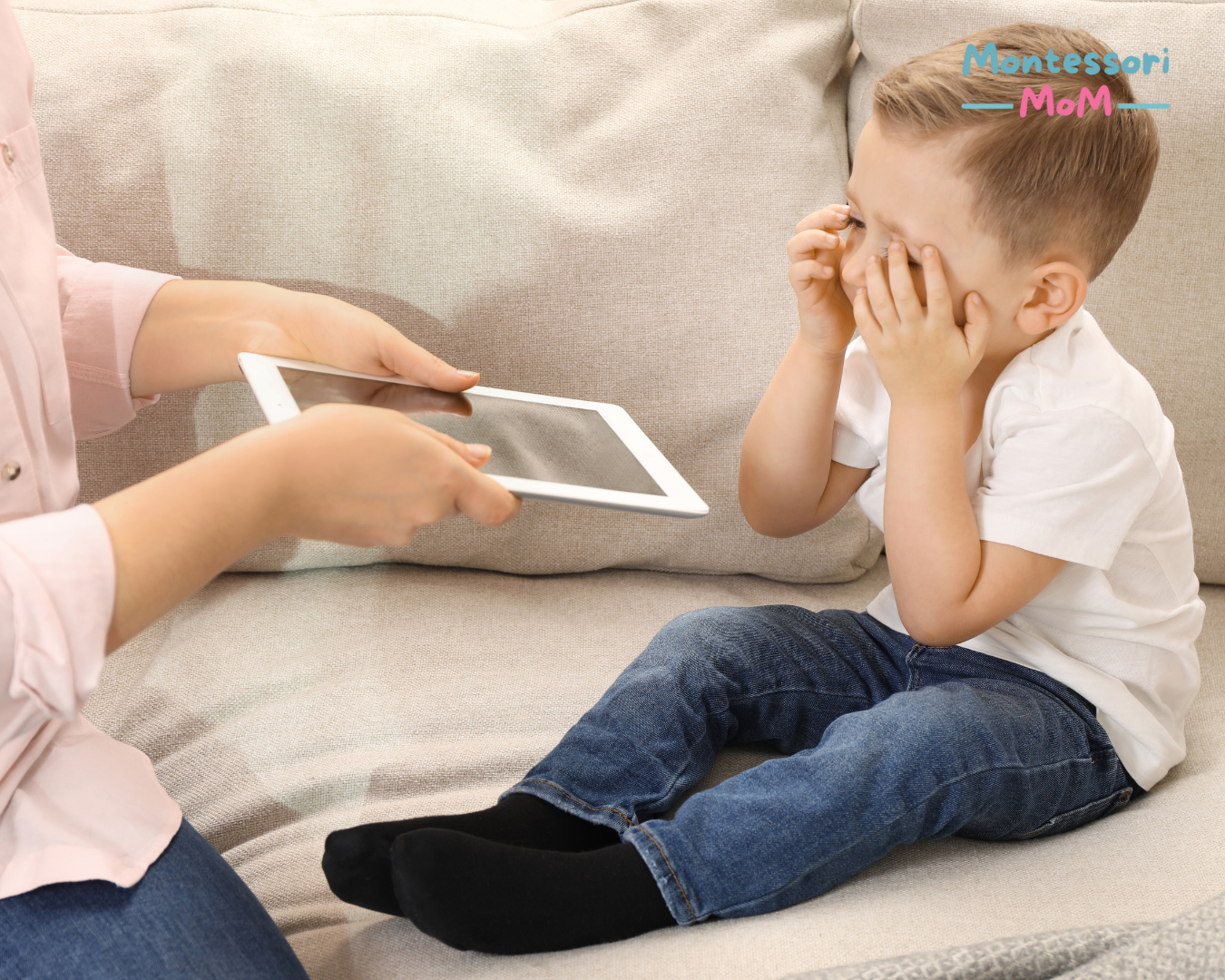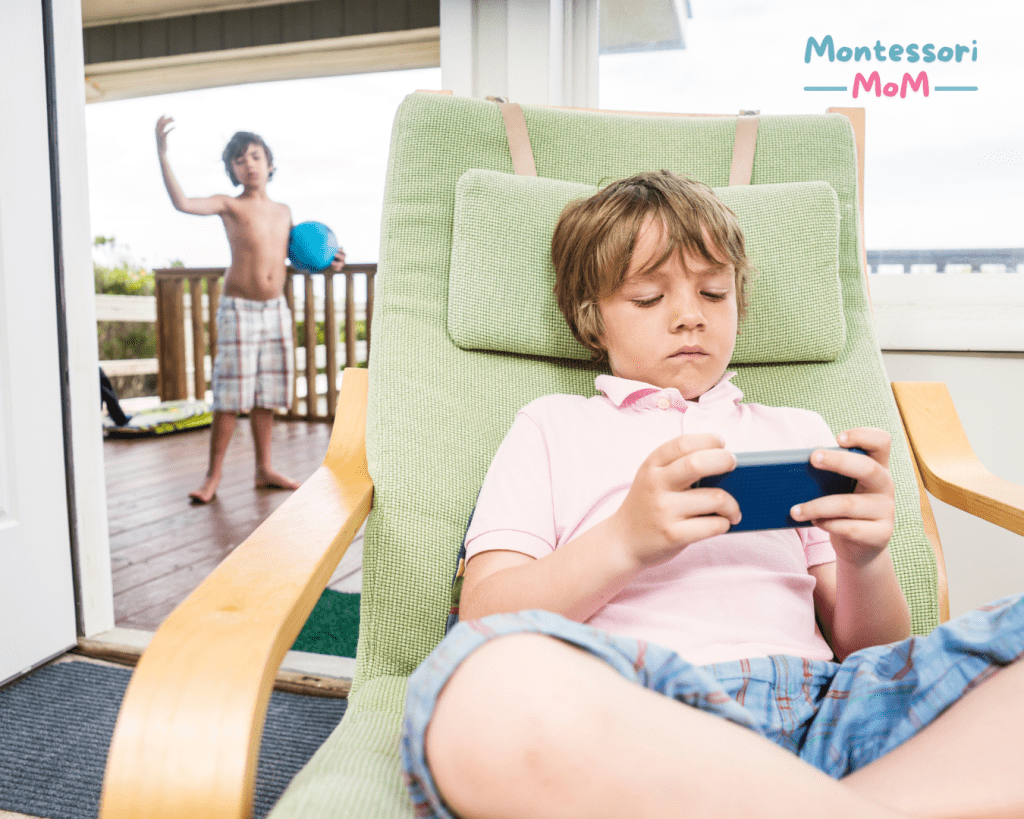Screen Time Warning:
What’s Safe for Your Child’s Age?

In today’s digital world, screens are everywhere—from TVs and tablets to smartphones and video games. While technology offers incredible opportunities for learning and staying connected, it also raises important questions for parents: How much screen time is safe for my child? How do I balance the benefits with potential risks?
These concerns are shared by parents, teachers, and healthcare professionals alike. Understanding how screen time affects children at different ages is crucial for their well-being. This article breaks down expert advice on safe screen time for various age groups and offers practical tips to help you manage your child’s screen use in a healthy way.
Understanding the Impact of Screen Time
Too much screen time has been linked to several problems in kids, such as trouble sleeping, behavior
issues, and less physical activity. Experts like the American Academy of Pediatrics (AAP) have long warned about the risks of spending too much time on screens.
One of the biggest concerns is how screen time affects sleep. The blue light from screens can mess with the production of melatonin, the hormone that helps us sleep. This can make it harder for kids to fall asleep, reduce the quality of their sleep, and shorten how long they sleep overall.
Too much screen time can also lead to more sitting around, which can increase the risk of obesity. Studies show that kids who spend a lot of time on screens often have higher body mass indices (BMI) compared to kids who are more active. Additionally, spending too much time on screens—especially with fast-paced or violent content—can affect how kids behave, making them more likely to have shorter attention spans and act out.
Safe Screen Use by Age: Simple Guidelines
To help with these concerns, health experts have set guidelines for how much screen time is safe at different ages:
- Infants (0-18 months): The AAP advises against any screen time for babies under 18 months, except for video chatting. At this age, babies learn best from interacting directly with their caregivers, and screens can get in the way of developing important skills.
- Toddlers (18-24 months): For toddlers, screen time should be limited to high-quality shows, and it’s best if parents watch with them to help explain what’s happening. Keep sessions short and focused, so your child gets the most out of it.
- Preschoolers (2-5 years): At this age, screen time should be limited to about one hour a day of good quality content. Preschoolers benefit from educational programs that help with reading, counting, and social skills, but screen time shouldn’t replace hands-on learning and play.
- School-aged Children (6-12 years): For kids in this age group, the AAP doesn’t set a strict time limit but emphasizes the need to balance screen time with physical activity, homework, and sleep. It’s important to focus on the quality of what they’re watching and to set clear boundaries on screen use as part of a family media plan.
- Teenagers (13-18 years): As kids become teenagers, screens often play a big role in their social lives. It’s important to guide them in making smart choices about their screen time, like setting limits on social media, encouraging them to think critically about what they see online, and making sure screens don’t interfere with sleep or physical activity.
Practical Tips for Managing Screen Time
While it’s important to be aware of the risks of too much screen time, the goal isn’t to get rid of screens entirely, but to use them wisely. Here are some simple tips to help manage screen time at home:
- Create Screen-Free Zones: Make certain areas of your home, like the dining room and bedrooms, screen-free zones. This encourages family interaction and helps set healthy boundaries around screen use.
- Be a Good Example: Kids often copy what their parents do. By limiting your own screen time, especially during family activities, you can set a positive example for your children.
- Encourage Other Activities: Promote a mix of activities, including outdoor play, reading, and creative projects. The CDC recommends that kids get at least 60 minutes of physical activity each day, which helps counteract the effects of sitting in front of screens.
- Watch What They’re Watching: Make sure the content your child is consuming is appropriate for their age and is educational. Watching together and talking about what you see can also help your child understand and remember what they’re learning.
- Establish a Screen-Free Bedtime Routine: To help your child sleep better, start a screen-free period at least one hour before bedtime. Use this time for calming activities like reading, telling stories, or quiet play to help your child wind down and get ready for sleep.
Take the Next Step:
If you’re worried about how screen time might be affecting your child’s sleep and well-being, we invite you to try creating a 1-hour screen-free bedtime routine.
Download our free guide:
Bedtime Detox & Connect Plan for Busy Moms.
This plan provides you with a simple step-by-step guide to creating your own effective bedtime routine designed to transform bedtime chaos into calm. By following these steps, you can reduce screen time tantrums, improve your child’s behavior, and strengthen your parent-child bond.
Inside, you’ll find a clear, step-by-step instructions with engaging activities and practical tips to help you create a peaceful, screen-free evening. Let’s get started and make bedtime a time of tranquility and connection.





